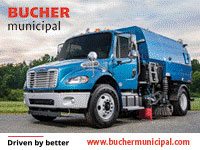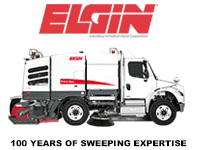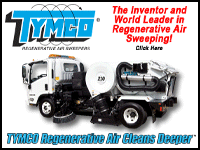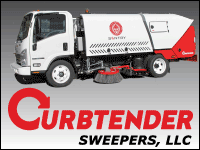Plans for Street Sweeper Testing Moving Forward
by Ranger Kidwell-Ross, editor
WorldSweeper.com
WorldSweeper has been chosen to lead in the development of a test about the effectiveness of different makes and models of street sweepers operating in the U.S. As Editor of WorldSweeper I, along with noted sweeper researcher Roger Sutherland, will be developing the test in coming months. The testing is planned to take place in Southern California in the summer of 2025. This is being done via a grant targeting microplastics runoff by Sea Grant and NOAA, administered by Sea Grant USC.
I have begun the process of contacting all U.S. sweeper manufacturers to alert them about what will be taking place. My plan is to allow them to weigh in on – and perhaps help develop – the testing process. I will additionally be seeking agencies that can help finance the tests on top of the Sea Grant budget so as to allow all makes and models of sweepers to take part.
Also, there would appear to be value in having the results hosted by the National Municipal Stormwater Alliance (NMSA), so as to help distribute the findings to the U.S. stormwater community. To further explore this option, both for myself and for members of the power sweeping community, our lead story offers both an explanatory article and a video between myself and Seth Brown, the founder and Executive Director of NMSA. In it, we explore the options of utilizing NMSA resources in that regard.
California has a trash removal initiative as well as this effort to understand how microplastics that accumulate on roadways, including tire particles and more, might best be removed prior to entering the stormwater runoff stream. Air quality is also an issue to be reckoned with, so we are in process of courting the input of the South Coast Air Quality Management District (SCAQMD), the agency that conducted the only other national-level test well over a decade ago.
Unfortunately, as I said in last month's editorial, the SCAQMD test was pass/fail and only included 10% paint pigment as a PM-10 portion. Then, when the curve was lowered to the 70% pickup threshold, every sweeper make and model, whether regenerative air, vacuum, or mechanical broom, found a way to pass so they could call the model 'PM-10 Pickup Certified'. That was so even though a machine could have left all of the paint pigment and up to 19% of the rest of the material on the ground.
Although the results have been touted by manufacturers for many years, and a passing grade is still required in order to allow a model's purchase by agencies in a number of states, the fact is that the 'pass' designation is essentially meaningless.
Localized studies indicate there is an enormous difference between the small-micron removal ability between those technologies. If all goes as planned, by the end of next summer we will have the results from a testing process that will show what that differential actually is. As reported in our last issue, a recent test by the City of Los Angeles found its Elgin Broom Bear picked up only 35% of the smaller-micron material; Elgin's RegenX results showed a 75% pickup ability.
We are now in the process of developing a sweeper testing process that is meaningful. Such a comprehensive sweeper testing process is the only way U.S. stormwater professionals can realistically determine what sweepers to buy for their particular needs. Given the very positive data so far, the process will have the eventual result of increasing by a significant amount the use of street sweeping as a pollutant control method.
As always, if you have questions and/or any news of potential interest to the power sweeping community, please let us know. Between this publication, the WorldSweeper.com website, and the World Sweeping Association, we'll be sure to get the information passed along to interested readers.
Good Sweeping,

Editor, WorldSweeper.com
Executive Director, World Sweeping Association
Member, PAVEMENT Hall of Fame
PS If you're a contractor I urge you to check out the many benefits of membership in the World Sweeping Association. Also, if you haven't 'liked' our WorldSweeper Facebook page, what are you waiting for? That's where we offer a variety of industry previews and updates on an ongoing basis.
October Newsletter Contents
(Scroll down to read stories or click on links below.)
- Sweeper Testing for Stormwater Pros: A Conversation With the Head of National Municipal Stormwater Alliance
- Examining the Effectiveness of Municipal Street Sweeping in Removing Road-deposited Particles and Metal(loid)s of Respiratory Health Concern
- Redondo Beach, CA, Allows Re-Parking After Sweeper Passes
- Elgin Sweeper Releases DualEyesTM on RegenX
- RAVO E2 Electric Sweeper Wins 2024 NY Product Design Award
Sweeper Testing for Stormwater Pros: A Conversation With the Head of the National Municipal Stormwater Alliance
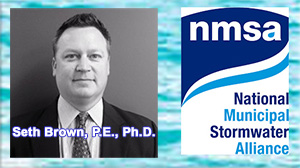
In the summer of 2025, in his capacity as heading the largest information resource on the planet about power sweeping, WorldSweeper's Editor will be designing and administering a street sweeper testing process. This will be done along with noted sweeper testing pro, Roger Sutherland, and will be via a collaboration with funds provided by Sea Grant/NOAA and the City of Santa Barbara. A key component of the concern that will be tested is removal of microplastics. What the sweeper test will be comprised of and where the test results will reside is currently under evaluation.
Our Editor plans to involve the sweeper manufacturing community in developing the testing protocols. He is also considering having the National Municipal Stormwater Association (NMSA) be the host of that process, as well as the distribution agency to get the test results out to the stormwater community. The intent of the following conversation between him and Seth Brown, Executive Director of NMSA, was to explore whether the NMSA organization would be suitable for the manufacturer collaboration process, as well as being the best choice to be the 'stormwater industry host' for the results.
Check out the Zoomcast and/or read what took place.
Examining the Effectiveness of Municipal Street Sweeping in Removing
Road-deposited Particles and Metal(loid)s of Respiratory Health Concern

Conducted in Toronto, Canada, the linked study information examined the effectiveness of regenerative air street sweepers in removing road dust and associated pollutants from arterial roads. The research aimed to assess how well street sweeping can reduce potentially harmful particulate matter and metal contaminants that can impact air quality and public health.
This study was published in the Elsevier/Science Direct publication in May of 2024. WorldSweeper learned about it this month and so has posted it here only now. WorldSweeper's Editor wrote a synopsis of the key findings and details from the study, which is the information at the link below. However, a link to the entire study is also available at the bottom of that page.
Access the information.
Redondo Beach, CA, Allows Re-Parking After Sweeper Passes

One of the most frequent complaints voiced on social media about street sweeping is that residents can't re-park after the sweeper goes by. Instead, they must wait until the posted timeframe for vehicle removal has passed. The City of Redondo Beach has changed its ordinance via an amendment proposed by none other than the city's Police Chief, Joe Hoffman.
Hoffman did a ride-along recently on a street sweeper and afterward consulted with code enforcement officers to put forth a new policy. The City's Public Works engineers have also created a sensible project to use GIS – Geographic Information Systems – to give residents real-time information about the status of street sweeping. The red-yellow-green website view is designed to tell anyone nearby if the sweeping on their street has not happened yet (red), is in progress (yellow) or has been completed (green).
Read about what Redondo Beach officials are doing.
Elgin Sweeper Releases DualEyesTM on RegenX

Elgin Sweeper announced the new Elgin DualEyes Camera system for visibility on the front right tire and front right corner of the sweeper, in addition to the right-side broom. This enhanced visibility of the curbline shows any possible obstructions in the sweeper's path.
The new DualEyes will first be available on the Elgin RegenX – a mid-dump, regenerative air sweeper that Elgin calls "both reliable and durable." It is also the machine that was featured in the recent test by the City of Los Angeles. The DualEyes system is for use when there is no right-hand steering available, so operating the sweeper from the left-hand position is possible. This helps reduce costs and chassis lead times.
Read the news.
RAVO E2 Electric Sweeper Wins 2024 NY Product Design Award

The 2024 NY Product Design Awards recently concluded its second competitive
season, announcing the winners. From a pool of over 1,000 submissions, a
number of exceptional designs were chosen for their ability to significantly
improve daily life through innovative solutions.
Among numerous entrants from around the world, the RAVO
E2 electric sweeper secured a prestigious Silver award. The
acclaimed work stood out due to its revolutionary design and
major innovations protected by 5 patents.
Check out the award-winning RAVO E2.
|
